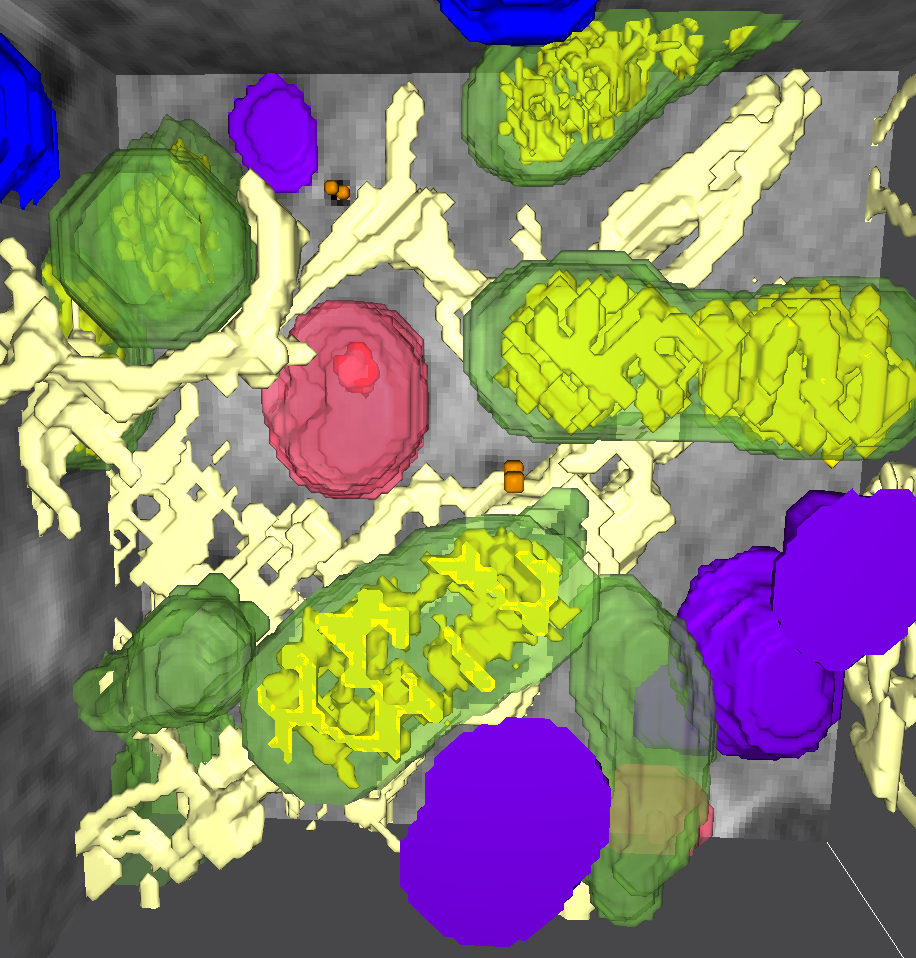Feb 13 2020
Nanoparticles have the ability to make their way easily into cells. For the first time, high-resolution 3D microscopy images from BESSY II offer new insights about their distribution and function.
 3D architecture of the cell with different organelles: mitochondria (green), lysosomes (purple), multivesicular bodies (red), endoplasmic reticulum (cream). Image Credit: © Burcu Kepsutlu/HZB.
3D architecture of the cell with different organelles: mitochondria (green), lysosomes (purple), multivesicular bodies (red), endoplasmic reticulum (cream). Image Credit: © Burcu Kepsutlu/HZB.
For instance, specific nanoparticles tend to build up preferentially in particular organelles of the cell. This could lead to an increase in energy costs in the cell.
The cell looks like it has just run a marathon, apparently, the cell requires energy to absorb such nanoparticles.
Dr James McNally, Study Lead Author and Biophysicist, Helmholtz-Zentrum Berlin
Currently, nanoparticles are not just found in cosmetic products, but they are omnipresent in the air, soil, water and food. Since they are very small, they make their way easily into the cells in the body of humans. This is also of significance for medical applications: Active ingredients-coated nanoparticles could be particularly introduced into cells, for instance, to kill cancer cells.
But more insights are required about the distribution of nanoparticles in the cells, their function there, and how these effects depend on their size and coating.
A new study at BESSY II—where Prof. Gerd Schneider’s group can capture X-ray microscopy images with soft, intensive X-rays—offers new insights. Scientists belonging to the X-ray microscopy team headed by Dr James McNally, a biophysicist at HZB, analyzed cells that were differently coated with nanoparticles. Although the size of the nanoparticles was precisely the same, they were coated with different active ingredients.
3D Image of the Cell and its Organelles
X-ray microscopy offers significantly better resolution than light microscopy, and a much better overview than electron microscopy.
Gerd Schneider, Professor, Helmholtz-Zentrum Berlin
The researchers acquired, for the first time, comprehensive, 3D, high-resolution images of the cells treated with the nanoparticles, where the organelles—including mitochondria, lipid droplets, endosomes, and multivesicular bodies—were contained within. Lipid droplets act as energy stores in the cell, while mitochondria metabolize this energy.
Accumulation of Nanoparticles
Investigation of the images revealed that the nanoparticles tend to build up preferentially within a subset of the cell organelles. Moreover, the nanoparticles alter the number of particular organelles at the cost of other organelles.
The variations in the numbers of organelles were identical irrespective of the nanoparticle coating. This shows that various different types of nanoparticle coatings may produce a similar effect. Further research with other cell types and with other nanoparticle coatings is necessary to assess how general this effect is.
Number of Lipid Droplets Decreases
“X-ray microscopy allows us to see the cell as a whole, so we were able to observe this behavior for the first time,” McNally explained.
We found that the absorption of such nanoparticles increases the number of mitochondria and endosomes, while other organelles, namely lipid droplets and multivesicular bodies, decrease.
Burcu Kepsutlu, Researcher, Helmholtz-Zentrum Berlin
Kepsutlu performed the experiments for her doctorate.
“When we go on a starvation diet or run a marathon, we see similar changes in the cell—namely an increase in mitochondria and a decrease in lipid droplets,” added McNally. “Apparently it takes energy for the cell to absorb the nanoparticles, and the cell feels like it has just run a marathon.”